Nothing “lifts” your photography like a drone camera. The best drone cameras offer a perspective that’s almost impossible to get any other way. They are used in real estate photography, landscape and nature, and industrial work. Sometimes they are used for inspection work. Others are used to add cinematic “Wow!” to music videos or action photography.
If you’re looking for the best drone camera to use in your photography, we’ve researched the field. Most of the drones in this review will open up the world of commercial drone cameras for you. We’ve included one budget option if you just want to try out the aerial world. Our top pick is the PowerEgg X Wizard. It’s waterproof, can land on water, and is also a standalone AI operated camera.
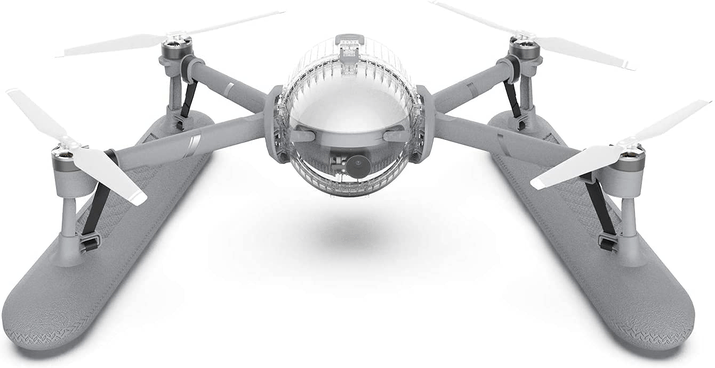
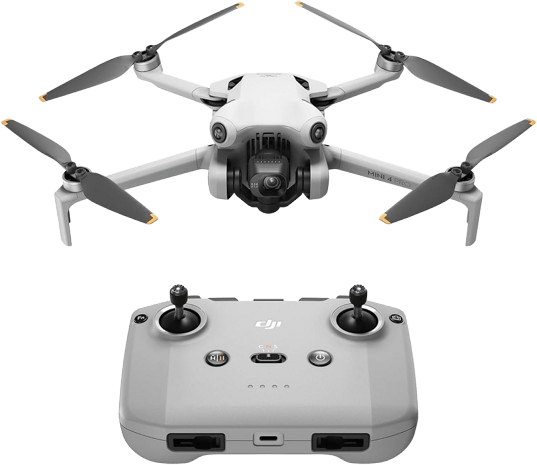
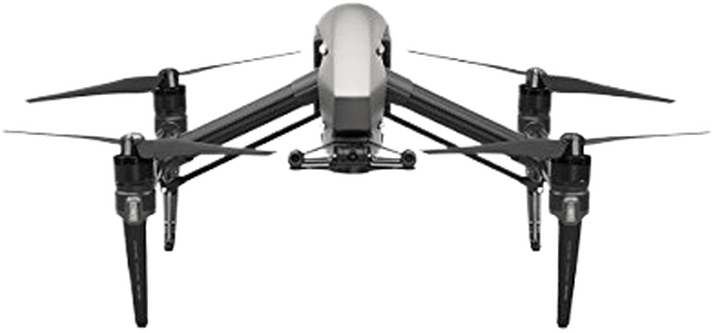
You’ll need to balance your requirements for image quality, price, and drone capability. Before we look at the drone cameras in detail, here is a summary of our choices.


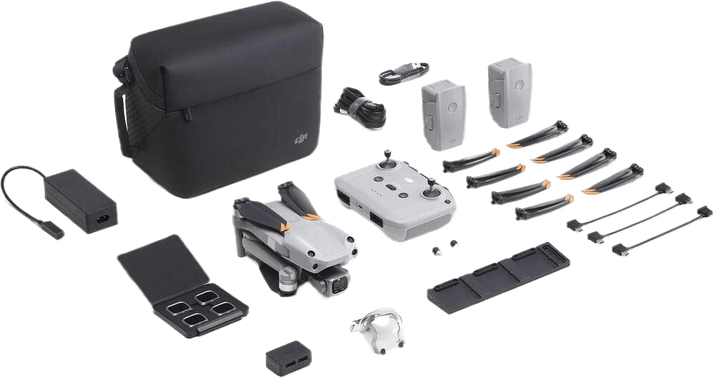

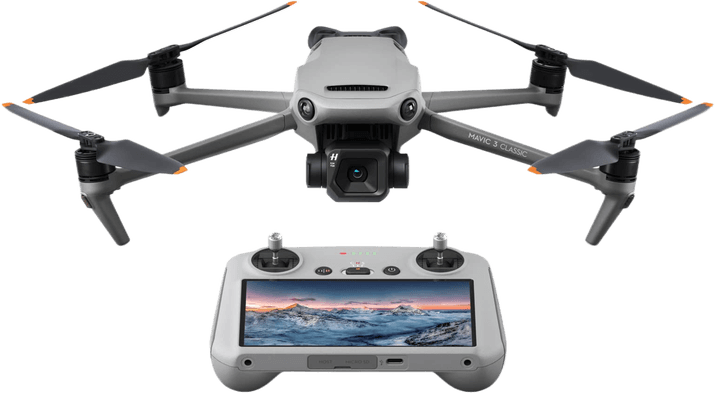
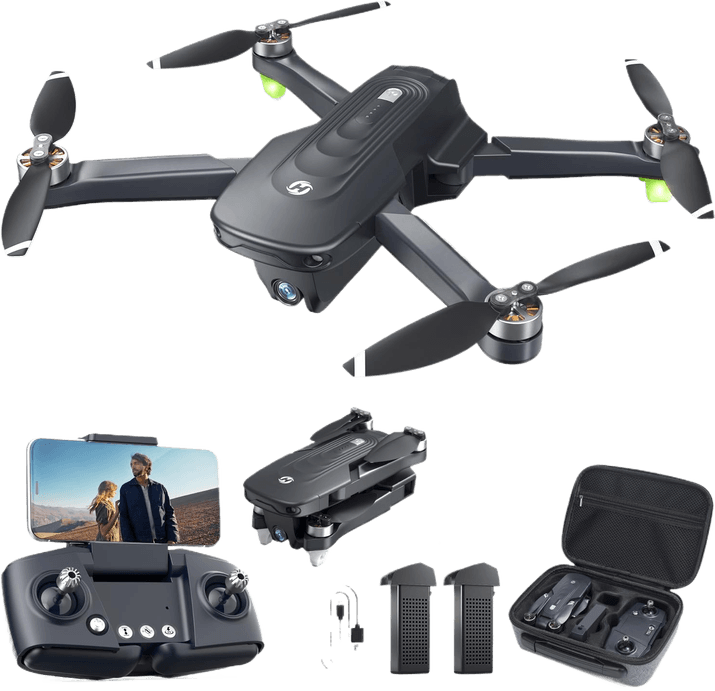
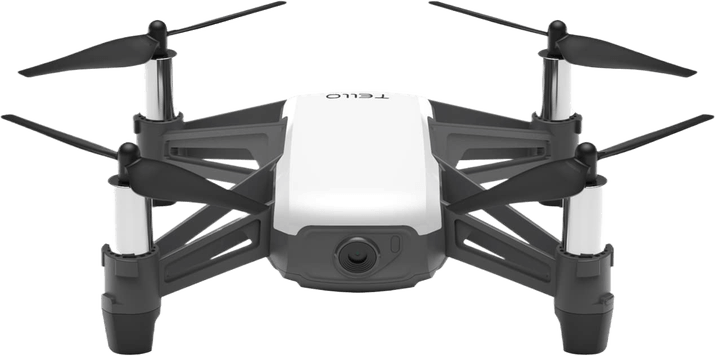
Now let’s look in more detail at our recommended drones.

| Brand |
Brand
PowerVision
|
| Max Video Resolution |
Max Video Resolution
4K
|
| Max Stills Resolution |
Max Stills Resolution
12 MP
|
| Flying Time |
Flying Time
30 min
|
| Range |
Range
3.7 miles
|
| Max Speed |
Max Speed
40 mph
|
| Weight |
Weight
18.4 oz
|
| Other Key Features |
Other Key Features
Waterproof, can land on water, detachable rotors for handheld use
|
| Best For |
Best For
Anyone looking for drone footage near water
|
If you're looking for something different, the PowerEgg X Wizard will catch your eye. With its egg-shaped body (hence the name) and optional floats, it stands out from the crowd. But it's not the looks that should pique your interest.
It would not be wise, to put it mildly, to take most drones out in the rain. And it’s even less wise to fly them over water unless you accept the risk of the potential watery grave for your beloved toy. But the PowerEgg is designed for all of this. It has a detachable waterproof cover to protect it in the rain. And the floats allow you to land on water.
The innovation doesn't stop there. You can separate the PowerEgg completely from its rotors and use it as a handheld camera. And it has gimbal stabilization. There's even a wrist strap that attaches to the body in place of one of the rotor arms. It's all rather clever.
Finally, you can also attach a tripod mount and use the PowerEgg as a standalone camera. Facial recognition and AI allow it to track you as you film. This simply sets it apart from other drones.
This is all well and good, but is the PowerEgg any good as an actual drone? Well, the answer here is yes. It can capture 4K video and RAW stills. There are two onboard microphones with optional noise reduction. And there is a microphone on the controller, so you can choose one or both for your footage.
The quality of the captured images is perfectly good for most consumer purposes. RAW is a better option for stills. The in-camera JPEGs lack some sophistication. And, of course, shooting through the weatherproof dome has a slight impact. Similarly, raindrops on the dome will impair vision slightly. But this drone is designed to capture shots that are impossible for other drones. So it's a choice between some less-than-perfect footage and none.
Flight times are acceptable. They are reduced slightly by the extra weight and drag of the housing and floats. But you don’t have to use these when the conditions don't require them.
The controller is a fairly standard setup with two joysticks and a mount for your phone.
The PowerEgg X Wizard is a great choice if you want its waterproof features. If you often fly your drone around water, then this could be the drone for you.

| Brand |
Brand
DJI
|
| Max Video Resolution |
Max Video Resolution
4K
|
| Max Stills Resolution |
Max Stills Resolution
48 MP
|
| Flying Time |
Flying Time
34 minutes
|
| Range |
Range
12 miles
|
| Max Speed |
Max Speed
44 mph
|
| Weight |
Weight
0.55 lbs
|
| Other Key Features |
Other Key Features
60 fps frame rate, slow-motion video, obstacle sensor
|
| Best For |
Best For
Anyone looking for a small, portable drone
|
The DJI Mini 4 Pro is the perfect choice if you want a compact, lightweight drone that still offers pro-level media.
If you take into account all its features, plus its price, it makes for the best DJI drone for any ability. Beginners can achieve professional-level drone shots. And professionals will have a compact, portable drone that’s packed with great features.
DJI describes this drone as lightweight and hassle-free. This sounds like a blessing to most photographers familiar with drone photography. And weighing under 0.55 lb / 250 g, it can be a welcome addition to any trip you go on.
Considering the 34 minutes you can get out of each battery, the Mini 4 Pro is perfect for a full day of hiking and shooting—if you have spare battery packs.
As for specs, the DJI Mini 4 Pro produces 4K video footage at 60 fps. And you can shoot images up to 48 MP! If you need those extra frames per second, it allows you to shoot in 1080p at 120 fps.
With specs like this, people will be surprised you didn’t rent a helicopter for the beautiful shots you take. Overall, this is a great drone for multiple skill levels and is reasonably priced.

| Brand |
Brand
DJI
|
| Max Video Resolution |
Max Video Resolution
5.2K
|
| Max Stills Resolution |
Max Stills Resolution
20 MP
|
| Flying Time |
Flying Time
27 minutes
|
| Range |
Range
4.1 miles
|
| Max Speed |
Max Speed
58 mph
|
| Weight |
Weight
7.6 lbs
|
| Other Key Features |
Other Key Features
Interchangeable cameras, Micro Four Thirds lens mount
|
| Best For |
Best For
Filmmakers
|
The DJI Inspire 2 is a big beast designed for professional users. Its big selling point is the mechanism which pulls the legs up once airborne. This allows a full unobstructed view for the front gimbal-mounted drone camera.
There are three compatible cameras. The top two offer interchangeable lenses and up to 6K capture with Apple ProRes and DNG. All of which is to say that this is a serious and expensive piece of kit.
Additional features that help to make this a strong pro-level contender are the top speed of 58 mph (93 kmh) and 4.3 mile (7 km) transmission range. Whichever camera you choose, there is a permanent on-board camera so you can see where you're going. And two operators can use this drone for precise shots. This means one pilots the drone and the other operates the camera.
The recording camera can autofollow your subject, giving you professional footage. And the interchangeable cameras and lenses means that you have a wide choice up to and including power zoom lenses. The camera has a Micro Four Thirds lens mount, which is handy if you have these already. There are counterbalance weights to let you trim the drone properly.
We think that the DJI Inspire 2 will find most of its fans among pro-level drone photographers. The hefty price tag won't be such a deterrent. And the two-operator possibilities mean opportunities for slick and sophisticated filming.

| Brand |
Brand
DJI
|
| Max Video Resolution |
Max Video Resolution
5.4K
|
| Max Stills Resolution |
Max Stills Resolution
20 MP
|
| Flying Time |
Flying Time
31 minutes
|
| Range |
Range
11.5 miles
|
| Max Speed |
Max Speed
42 mph
|
| Weight |
Weight
1.15 lbs
|
| Other Key Features |
Other Key Features
One-inch sensor, Active Track focus following, up to 60 fps video
|
| Best For |
Best For
Anyone looking for a compact drone with a high MP count
|
There has been some discussion online about where the DJI Air 2S fits in the product range of the dominant drone camera producer. But that should not distract from the fact that this is a fantastic drone in its price range.
Photographers will be pleased with the upgrade to a one-inch sensor. But with a drone, a camera is only as good as the drone's ability to position it where you want it. And in this respect, the Air 2S is also a fine performer.
In fact, it delivers a blend of flying ability, portability, and image quality that is hard to beat. The camera delivers 5.4K video and HDR from its 24 MP sensor. And it does it in a body that’s remarkably compact compared to other one-inch sensor drones. And flyability is exceptionally good.
The 5.4K video is impressive, but some might find the 22mm equivalent focal length lens a little wide for their taste. The good news that if you crop down to 4K you get a tighter shot. You also get 60 fps at 4K (instead of 30 fps for 5.4K).
Flight highlights include a range of sensors to enable the Air 2S to cope in tricky situations. Navigating through trees or other tricky obstacles is handled well. And DJI says it will cope with windy conditions up to 23.9 mph (38.5 kmh). This can certainly help you to focus on composition rather than control.
Transmission range is impressive. And video will successfully reach your mobile device from up to 7.5 miles (12 km) away. And if you lose contact, the automatic return to home uses GPS/GLONASS to find you easily.
The DJI Air 2S offers good image quality, some impressive smart features, and portability. It’s an attractive choice for drone camera photography.

| Brand |
Brand
DJI
|
| Max Video Resolution |
Max Video Resolution
5.1K
|
| Max Stills Resolution |
Max Stills Resolution
20 MP + 12 MP
|
| Flying Time |
Flying Time
46 minutes
|
| Range |
Range
8 miles
|
| Max Speed |
Max Speed
42.5 mph
|
| Weight |
Weight
1.9 lbs
|
| Other Key Features |
Other Key Features
Twin cameras, manual exposure control, 28x telephoto
|
| Best For |
Best For
Anyone looking for a drone camera with flexible focal length options
|
The DJI Mavic 3 brings a Micro Four Thirds sensor camera to a foldable drone. There was a time when folding drones were seen as distinctly amateurish. But things have changed. And the Mavic 3 certainly makes the case for taking foldable drone cameras seriously.
Of interest to photographers, of course, is the camera. Or rather cameras. The main camera is a Hasselblad-branded affair. It boasts a 20 MP sensor and can capture 5.1K video. In pro mode, you have control over the aperture, shutter speed, and ISO. There is an impressive 12.5 stops of dynamic range.
The second camera is not the same quality as the main one. But it is equipped with a digital zoom. Or rather, with switchable fixed focal lengths. So you can switch from the same point of view as the main lens, up to 28x telephoto. It’s a digital telephoto zoom, so image quality takes a hit at the longer lengths. On the plus side, it does help you to see from a distance if an object is worth flying closer to.
Video from the main camera can be shot at full resolution at up to 50 fps. Drop down to 4K and you get an impressive 120 fps. It's easy to see how action drone shots at this combination could make for compelling viewing.
As for flying properties, the Mavic 3 is not lacking. Full sensor coverage makes your flying generally safe. Tree avoidance is reliably effective. And the top speed of 47 mph (76 kph) is plenty for some exciting footage. You'll still receive video signals at up to 9.3 miles (15 km). That footage is a decent 1080p at 60 fps too. And it has return-to-home mode if you lose sight of it.
The DJI Mavic 3 is not cheap. But it provides a wealth of features that many will find attractive. Especially if they want the increased portability of a folding drone camera. It has an impressive hover time of 46 minutes. This could be a deciding factor for some users.

| Brand |
Brand
Holy Stone
|
| Max Video Resolution |
Max Video Resolution
4K
|
| Max Stills Resolution |
Max Stills Resolution
20 MP
|
| Flying Time |
Flying Time
46 minutes
|
| Range |
Range
1640 ft / 500 m
|
| Max Speed |
Max Speed
30 mph
|
| Weight |
Weight
0.55 lbs
|
| Other Key Features |
Other Key Features
Modular batteries, 100º viewing angle, silent motor, transmitter control with phone mount
|
| Best For |
Best For
People in need of a low-cost drone
|
The Holy Stone HS175D is a drone that’s packed with features but remains affordable. It isn’t the
That 4K video comes from a camera that can be remotely adjusted up or down by up to 90 degrees. The fixed lens has a 100º viewing angle, which gives you a beautifully wide field of view.
An optical flow lens aids altitude stability. This helps the drone know how far away the ground is.
Range is fairly limited at 1640 feet / 500 m, but you can still get some great aerial shots of your surroundings. It also has a silent motor, so you won’t cause a scene when flying it about.
Return-to-home has three modes. The first allows you to summon it back to you. The second initiates a return when battery levels are low. The third is automatic if the drone loses connection with the transmitter. This means that if your drone goes beyond transmission range, it won't just keep going forever. Instead, it will head for home. You can resume your flight as soon as the drone establishes connection again.
The transmitter has all the controls you could need. It also has a smartphone mount so you can see what you’re shooting in real time. You don’t have to wait until the footage has been transferred to another device.
If you've not yet had the pleasure of flying a drone, then hopefully this article will encourage you. Are you looking for a fun toy or looking for the best camera drone you can afford? Here are some things you should pay attention to when looking for the best drone under $200.
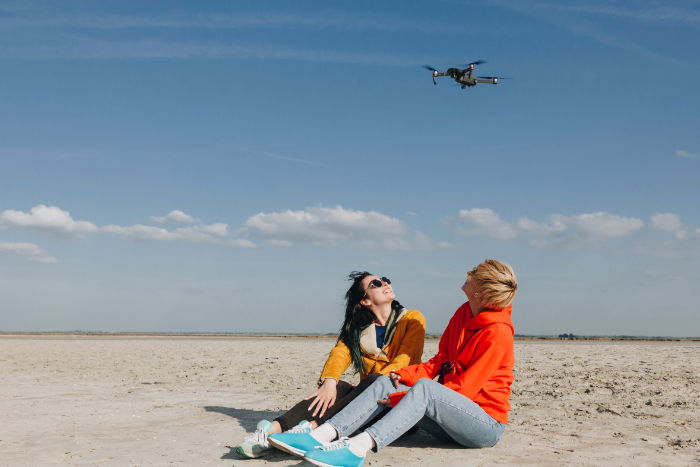
There's no short answer to that. You will need to check local laws and restrictions. The Federal Aviation Administration in the US has a weight limit of 0.55 lbs (250g) for unlicensed, unrestricted drone use. Even then, there might be local restrictions because of airports or other sensitive areas. So you will need to check locally.
Privacy laws might have a bearing on drone use too. And there’s no denying that drones can be annoying to others who might object to the noise. Or they might feel they are being watched. These are all things to consider when flying.
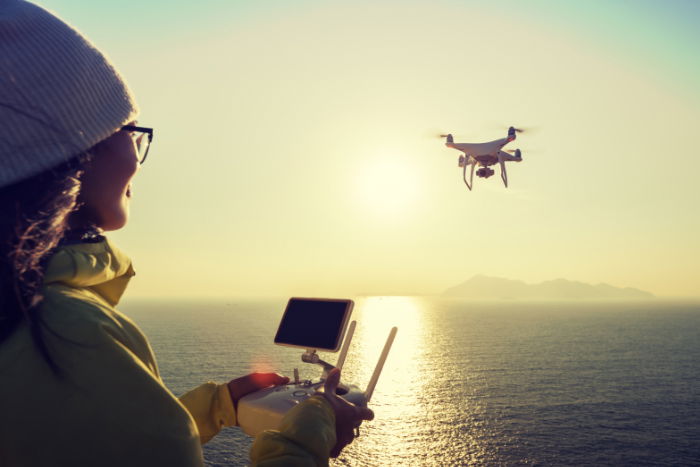
© Li Zhongfei
This review of the best drones under $200 covers quite a range. At the cheaper end are pretty simple toys. At the more expensive end, you will find capable camera drones.
Some drones have a designated controller that controls the flight. Others rely on your mobile phone.
First-person view is when you can see what the drone is seeing in real time. This is a helpful and fun feature.
This isn’t as scary as it sounds. If you don't know which way the drone is facing, this allows you to move it forwards or backward in relation to where you are. Let’s say that after rotating the drone left, you want to fly it back to you. With headless mode, towards you is always backward. This is especially helpful on drones without a camera.
This helpful feature simplifies launching and recovering your drone when you first begin. The push of a button will send your drone into the air. Then you can begin your flight. When you’re done with your flight, just hit the same button. This makes the drone return to the space you launched it from.
Remember, what the manufacturers tell you is the maximum. Longer flight time usually costs money. Some drones come with multiple batteries. This extends the flying time. It might also be worth checking recharge time, and how easy and cheap it is to buy extra batteries.
Some drones fly with on 2.4 GHz radio signal for a longer range. And some fly on Wi-Fi for simplicity. Some of the best drones offer 5 GHz communication, which provides a much longer range.
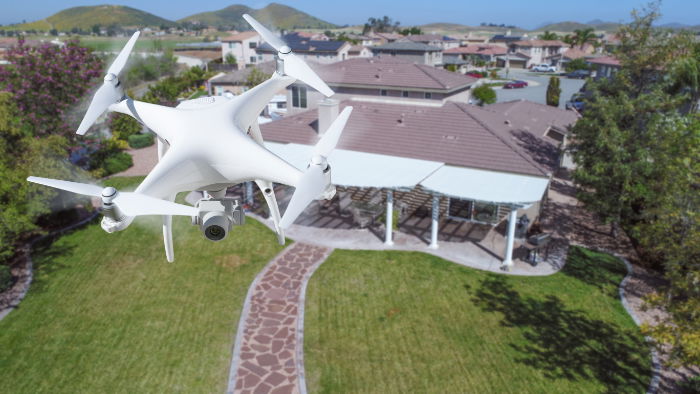
© Andy Dean Photography
You might just want to fly the drone around. But you might want it to do flips, fly around you, or follow a set route. A follow-me mode can be great for social media shots. A GPS drone will offer a range of features, such as waypoint flying and return-to-home. Waypoint flying allows you to mark points on your phone for the drone to follow. In some cases, these points will be on the FPV picture from the drone.
On drones equipped with GPS, this might be on a downloaded map. In theory, you can tell your drone to fly down your street and then turn right. But be sure to check privacy laws in your location.
Return-to-home is useful. If you lose sight of your drone, getting it back to you can be a problem. Return-to-home allows a one-button summons to bring your expensive toy back to you. Many drones will come back automatically if their power is running low. Or if they lose contact with the pilot, they will return to the starting GPS location.
4K video is common on drones now. But you’ll want to pay attention to where the video is recorded to. Some record to a removable memory card, but some record to your phone.
Some manufacturers claim 4K, but it only applies to still shots. But in this review, all of the drones I’ve listed as having 4K have genuine 4K video.
Some drones have one or multi-axis stabilization. Other drones use a gimbal to stabilize the video.
A stable flight makes the difference between great video and unusable junk. Some of the more expensive drones allow you to change the camera angle while flying. This is a great feature. But it can also lead to annoying video results, so use it wisely.
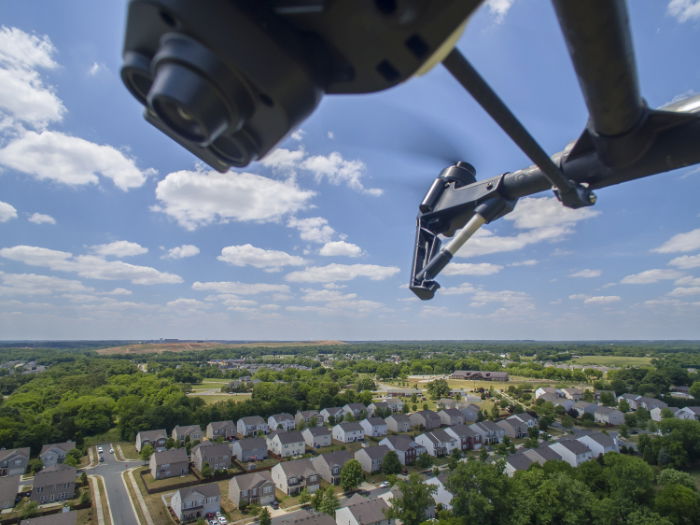
© Action Sports Photography, Inc. (Depositphotos.com)
The PowerEgg X Wizard brings versatility to drone flying that is absent in many of its competitors. The waterproof design, optional floats, and AI capabilities make this our top pick for a camera drone.


